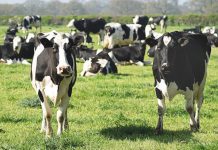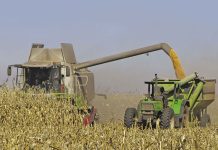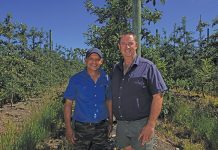Can you PLEASE clear up the eternal question of whether GM foods are dangerous and detrimental to the earth and our health?
No, they are not. No agricultural crop technology in the history of the world has been subjected to such stringent scientific and medical tests as GMOs. Plant biotechnology products have a history of more than 12 years of significant commercial use around the world and some 30 years of research and development. When we applied for the first biotech trials in 1993, the Department of Agriculture turned to the group called SA Gene Experimentation to conduct risk assessments and establish field containment requirements. Today, in terms of the GMO Act of 1997 and Act 36 of 1947, both biotech and chemistry products have been approved in terms of environmental, animal and human safety.
The SA Women’s Agricultural Union recently called for consumer biotech education. Who’s responsible for educating the sometimes confused consumer about the pros and cons of GMOs?
Industry organisation Africa Bio is predominantly responsible for the education and promotion of biotechnology (www.africabio.com). Government is also involved in the education process, with biotechnology now also forming part of the new school curriculum. The Department of Science and Technology conducts a programme promoting the public understanding of biotechnology (PUB) and there’s information at www.pub.ac.za. The media can also play a major role in the process, but must at all times refrain from polarisation tactics or actions. We, as Monsanto, have pledged to share information on safety and benefits related to our products with the scientific community and the public. Unfortunately, this fact typically is overlooked by stakeholders and is often challenged by opponent groups. Monsanto claims that GMO is reshaping agriculture.
Please elaborate.
Twelve years after commercialisation of the first biotech crops in 1996, farmers continue to plant more of these crops. According to a report released by the International Service for the Acquisition of Agri-biotech Applications (ISAAA), planting of biotech crops grew by 12% or 12,3 million hectares to reach a record of 114,3 million hectares in 2007. The 2008 ISAAA publication reports that two new countries, Chile and Poland, are included on the list of 23 countries where farmers planted biotech crops in 2007. Looking forward, we expect that the second decade of biotech crops, 2006 to 2015, will see an even more rapid increase in the area planted. The number of hectares, the number of countries and the number of farmers planting biotech crops are expected to double by 2015. Biotech crops have an important role to play in helping achieve the UN’s Millennium Development Goals of reducing hunger and poverty by 50% by the year 2015.
How has biotechnology changed the face of agriculture in SA?
Since the release of GM cultivars in South Africa in 1998, there’s been a steady increase in the area planted to these products, giving the South African farmer first-hand experience of the excellent insect- and weed-control provided by the technology. Sales over the past nine years further reflect farmers’ satisfaction with the products. About 57% of all maize grown in South Africa is Bt maize, while more than 80% of the cotton planted in this country is of the stack variety combining both the Bollgard and the Roundup Ready technology in one plant.
Tell us about the Water Efficient Maize for Africa (WEMA) partnership and the much-debated drought-tolerant gene. What are the hopes for this development?
In March 2008, the African Agricultural Technology Foundation, a non-profit organisation focused on improving the lives of small-scale farmers in Africa, announced a public-private partnership with the International Maize and Wheat Improvement Centre to develop drought-tolerant maize. WEMA was formed in response to a growing call by African farmers, leaders and scientists to improve yield stability and protect the harvests of small-scale farmers in the face of drought. Funding is provided by the Bill and Melinda Gates Foundation and the Howard G Buffett Foundation and we hope that the drought-tolerant maize varieties developed through WEMA will produce more reliable yields for small-scale farmers in Africa – most of whom are women – so they can feed their families and increase their income. While this will be viewed as a philanthropic effort for the time being, it may also be the beginning of a whole new generation of future customers.
Food security is probably the most contentious agricultural issue worldwide. It’s believed biotechnology will be central to providing sufficient food. How?
Many people in Africa depend on agriculture to provide basic foodstuff to families and communities. In the face of growing populations, as well as health and environmental challenges, current farming methods are not meeting all the requirements for food security and economic growth. Most small farmers in Africa don’t plant scientifically improved seeds, don’t use chemical fertilisers, don’t have access to veterinary medicine, electricity or irrigation. And according to research, Africa’s farms today are producing 19% less than they did in 1970. These conditions persist throughout nearly all of sub-Saharan Africa. It’s therefore important that Africa uses appropriate technologies and policies to transform its agricultural systems, becomes more productive and profitable, and provides crops with a better nutritional value. We see biotechnology as an important option that offers hope and promise. In 20 years’ time, there will be another 2 billion citizens that will need space to live and food to eat. The competition for agricultural land and land for urban development is already intensifying, coupled with competition for water.
So how do we produce more food with less land?
And how do we optimise every litre of water – because water concerns are growing – as we look at food and fuel? Biotechnology can play a major part in alleviating malnutrition, it can also enhance sustainability and secure yields worldwide. The technology has already benefited farmers and the environment globally, but we need to consider the wider context in which gene technology may be used. We focus on improving yields for farmers, practices and technologies that make agriculture more sustainable and protect the environment, and yield better quality food.
What does the future hold for biotechnology?
Biotech traits have focused on yield protection with insect resistance and herbicide protection. In the future, it will focus on value creation for farmers and consumers.
What are Monsanto’s financial commitments to the field and are there any recent developments you’d like to mention?
We invest more than US0 million (R5,39 billion) annually, or more than US million (R15,4 million) a day, to identify and develop new solutions for growers, and are looking at ways to keep growers at the forefront of a competitive global market. In 2007, our biotechnology programme tested more genes than in any other year in the company’s history. Our Rx pipeline has already produced 18 commercial products, including first- and second-generation technologies aimed at helping growers maintain a competitive edge in the agricultural marketplace and deliver benefits to the grower. This year, 10 projects were either added or advanced to the research and development pipeline, the largest volume of project progress to date. We have advanced a multi-generational family. Second-generation drought-tolerant maize has been advanced to phase two and first-generation drought-tolerant maize to phase three. This is the industry’s first drought project to move into the regulatory and commercial phase. |fw








